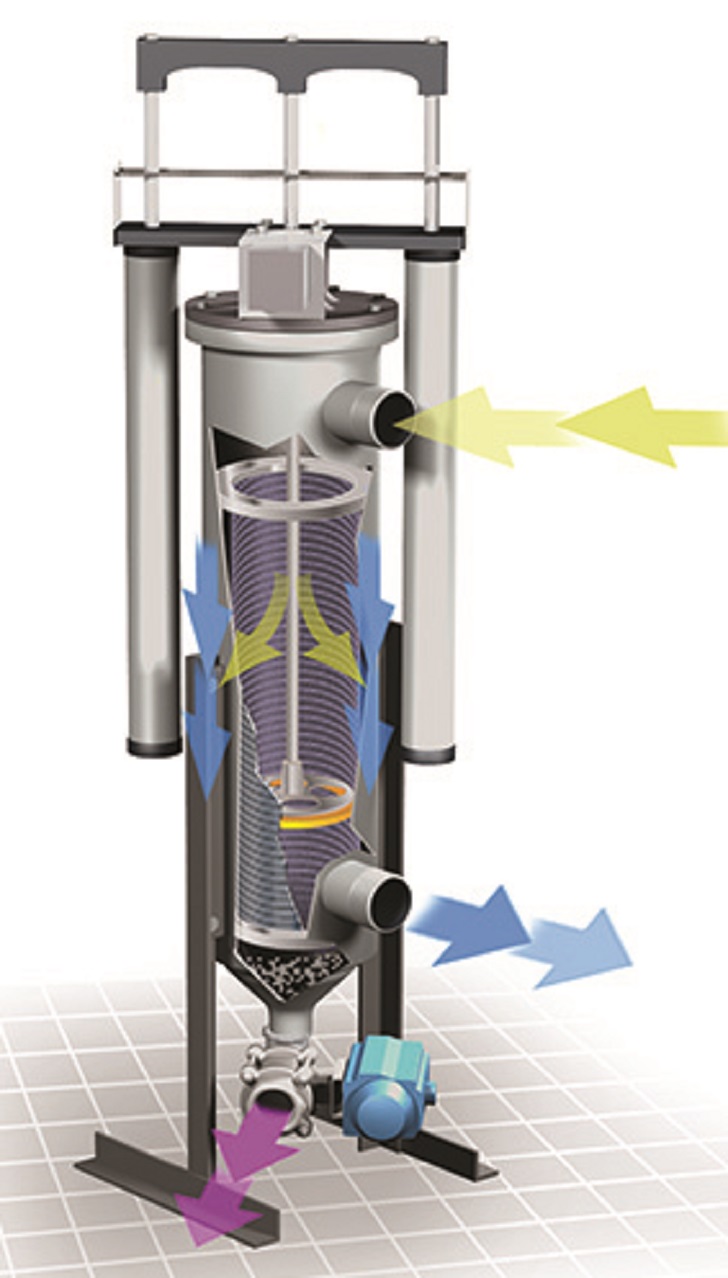
Selecting a filtration strategy for process cooling fluids can be as challenging as developing a filtration solution for the process products themselves. This article looks at some of the options available and how mechanically cleaned filters can provide a solution.
Keeping process cooling fluids clean is not as easy and choosing the best filtration solution for a process cooling application must consider a number of factors including:
- The fluid source
- The source, volume and nature of contaminants present in the fluids
- The heat exchanger materials and technology being used
- Pressures and temperatures within the process environment
- The amount, if any, of acceptable downtime for filter maintenance
- The initial capital and long-term operating cost of the filtration solution
Even the most cursory examination of that list should make it clear that no pre-packaged, one-size-fits-all solution is likely to be successful. In reality, selecting a filtration strategy for process cooling fluids can be every bit as challenging as developing a filtration solution for the process products themselves.
Complementary technologies A successful solution is likely to include a variety of complementary technologies. For example, a system using raw river or ocean water as a source might very well include intake bars to keep out large floating debris; a screen with 3/8 in openings; a strainer to trap anything larger than 1/32 in diameter; and, finally, a filter to remove any particles larger than 25 microns.
The water source will also influence the type of media used in the strainer or filter. Sand, for example, does not change size or shape so it is easily trapped in a porous filter medium. Pond scum, on the other hand, presents an entirely different challenge that is best handled with mechanically cleanable media. Other organic contaminants, which are typically present in quantity in surface water after rainstorms, present their own challenges that have to be quantified and accommodated based on specific local conditions.
Once in the process system, the water may be further treated to inhibit corrosion in carbon steel piping and heat exchangers or filtered again to remove even smaller particulate as necessary. At that point, the process cooling water represents a significant investment and will likely be recycled through a secondary heat exchanger and recirculated. That, of course, means it must also be re-filtered to remove any scale or corrosion particles picked up from pipes and heat exchangers.
Strainers and filters perform essentially the same function, but filters can remove particles of much smaller size. The general rule of thumb is “If you can see it, you can strain it.” In practical terms that means that particles down to range of 0.003 in – 0.004 in (0.07 - 0.1 mm, 75 – 100 microns, 200 – 150 mesh) can be removed effectively with a simple strainer. For anything smaller, a filter, which can remove particles as small as a few microns, will be necessary.
Periodic removal Regardless of whether a strainer or a filter is in place, the build-up of particles trapped in the media must be removed periodically. For a basic basket-type strainer this can be as simple as shutting off the flow, manually removing the basket and dumping the trapped debris. Simple filters may also use a filter bag constructed of woven polyester material that is maintained in essentially the same way.
Obviously, stopping the flow and manually cleaning the filter element means that the process is either shut down during the maintenance period or it is unprotected while the filter or strainer is by-passed. Neither situation is optimal. The solution is a self-cleaning filter that comes in two basic designs.
An automatic self-cleaning filter uses a rotating hollow internal arm to collect debris deposited on the filter media. As more and more particles are trapped on the media the pressure drop through the filter increases until it reaches a pre-determined value. At that point a valve is opened which allows fluid to exit the filter through the rotating arm, carrying the accumulated debris with it.
This type of filter typically removes particles larger than 50 microns and can handle debris loads up to about 200 parts per million. Automatic filters are best used in high-volume situations where fluid losses up to five% of total flow during cleaning is acceptable.
Mechanical disc A mechanical self-cleaning filter uses a mechanical disc to scrape accumulated debris off the filter media. Again, as trapped debris increases the pressure drop across the filter the scraper is actuated at a predetermined value. The debris is deposited at the bottom of the filter housing where it can be removed without interrupting the flow through the filter. The cleaning action of the mechanical filter makes it suitable for removing particles less than 10 microns in diameter.
These filters are also able to handle higher debris loads and more frequent purge cycles than automatic filters. They also consume a much smaller volume of fluid during cleaning than an automatic filter.
Note that either a strainer or a filter creates a pressure drop and also a flow restriction. Both factors must be accounted for in designing the system. Adding either as an afterthought may require up-sizing pumps to maintain adequate flow volume and pressure.





